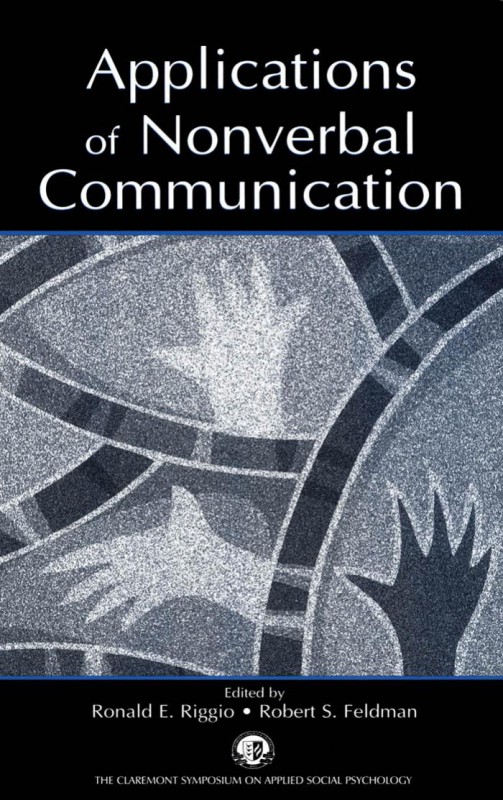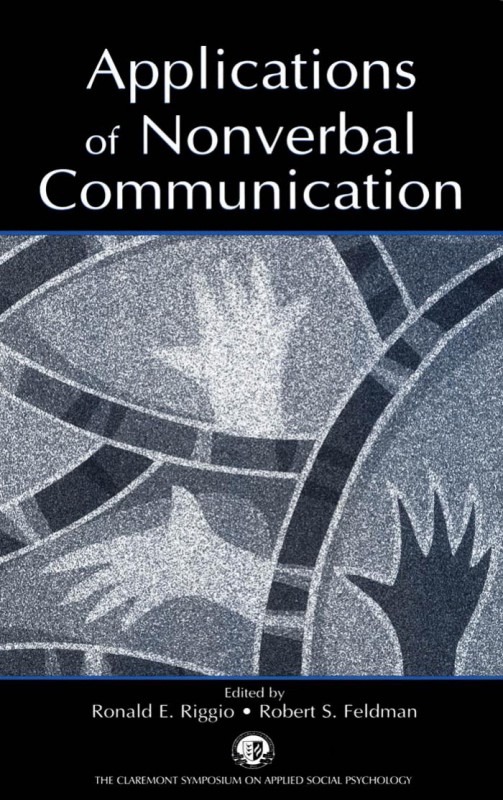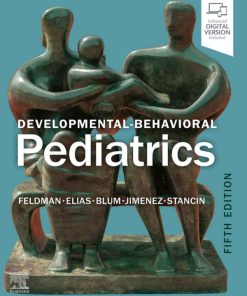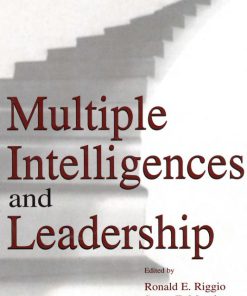Applications of nonverbal communication 1st Edition by Ronald Riggio, Robert Feldman 0805843345 9780805843347
$50.00 Original price was: $50.00.$25.00Current price is: $25.00.
Authors:Applications of nonverbal communication-L. Erlbaum Associates (2005) , Author sort:Associates, Applications of nonverbal communication-L. Erlbaum , Ids:0805843345 , Published:Published:May 2005
Applications of nonverbal communication 1st Edition by Ronald Riggio, Robert Feldman – Ebook PDF Instant Download/Delivery. 0805843345, 9780805843347
Full download Applications of nonverbal communication 1st Edition after payment

Product details:
ISBN 10: 0805843345
ISBN 13: 9780805843347
Author: Ronald E. Riggio, Robert S. Feldman
The goal of this edited volume is to provide a much needed bridge between the research on nonverbal communication and the application of those findings. The book features contributions from some of the leading researchers in the field. These distinguished scholars apply their understanding of nonverbal communication processes to a variety of settings including hospitals and clinics, courtrooms and police stations, the workplace and government, the classroom, and everyday life. It explores nonverbal communication in public settings, in intimate relationships, and across cultures and general lessons such as the importance of context, individual differences, and how expectations affect interpretation. Applications of Nonverbal Communication appeals to a diverse group of practitioners, researchers, and students from a variety of disciplines including psychology, health care, law enforcement, political science, sociology, communication, business and management. It may also serve as a supplement in upper level courses on nonverbal communication.
Applications of nonverbal communication 1st Table of contents:
1 Nonverbal Communication and Health Care
Patients’ Nonverbal Communication
Physicians’ Nonverbal Communication
Power and Status
Learning to Communicate Nonverbally
Measurement of Nonverbal Behavior in Patient-Practitioner Interactions
The Next Steps for Nonverbal Research and Practice in Health Care
References
2 Facial Expression Decoding Deficits in Clinical Populations with Interpersonal Relationship Dysfunctions
Social Anxiety
Attentional Biases
Evaluative Deficits and Biases
Alcohol Dependence
Psychopathy
Conclusions and Direction for Future Research
Acknowledgments
References
II Applications to Law and Politics
3 Communication in the Courtroom and the ‘Appearance’ of Justice
Introduction
Courtroom Context and Communication
Expectancy Violation Theory
Context and Expectancy Violation in the Courtroom
Communication, Behavior Expectations, and Norms in the Courtroom
Courtroom Expectancy Violations and Perceived Credibility
Toward a Unified Understanding of Communication in the Courtroom
Four Core Themes For Researchers
Four Implications For Practitioners
Closing
References
4 Police Use of Nonverbal Behavior as Indicators of Deception
Relative Impact of Speech Content and Nonverbal Communication on Impression Formation
The Behavior of Liars
How do Police Officers Think Liars Behave?
Police Officers’ Ability to Detect Lies
Directions of Further Research in Lie Detection
Epilogue
References
Endnotes
5 Nonverbal Behavior and Political Leadership
Nonverbal Behavior and the Dimensions of Relationship
Nonverbal Behavior and Leadership Enactments
Nonverbal Behavior in Presidential Debates
Ethnicity, Nonverbal Behavior, and Perceptions of Leadership
Conclusion
References
III Applications to Business and Education
6 Business Applications of Nonverbal Communication
Nonverbal Communication in the Evaluation of Personnel
Nonverbal Communication in Management and Leadership
Nonverbal Communication and Managing Emotions in the Workplace
Nonverbal Communication in Sales and Customer Service
Nonverbal Communication and the Virtual Work Organization
Future Directions and Research
References
7 Working on a Smile: Responding to Sexual Provocation in the Workplace
Sex, Power, and Nonverbal Behavior
Sex, Power, and the Work Environment
Smiling in Response to Sexually Provocative Questions
Interpreting Women’s Smiles
Sex Differences in Identifying Duchenne and Non-Duchenne Smiles
Likelihood to Sexually Harass and Ratings of Smiling and Non-smiling Women
Implications and Future Directions
Acknowledgments
References
8 No More Teachers’ Dirty Looks: Effects of Teacher Nonverbal Behavior on Student Outcomes
Approach and Scope of the Current Chapter
Making a Case for the Special Relevance of Nonverbal Behavior in Teaching
Teacher Nonverbal Immediacy and Student Outcomes
Meta-Analysis of the Teacher Nonverbal Immediacy Literature
Implications for Research on Teacher Nonverbal Immediacy: Where Do We Go From Here?
Other Research on the Relations between Teacher Nonverbal Behaviors and Student Outcomes
Studies Looking at Discrete Nonverbal Behaviors.
Summary and Conclusions
Mediation of Teacher Expectancy Effects
Mediating Variables
Four Factors
Mediating Variables and Causal Inference
Applications and Remaining Questions
Differential Teacher Nonverbal Behavior in Other Domains
Do Teachers Demonstrate Different Nonverbal Behaviors Toward Girls and Boys?
Do Teachers Show Different Nonverbal Behavior to Students of Different Races?
Differential Teacher Behavior as a Function of Other Variables
Implications and Suggestions for Researchers and Teachers
What Have We Learned So Far And Where Do We Go From Here?
Training in Nonverbal Behaviors
Closing Thoughts
Acknowledgments
Notes
References
IV Social and Cultural Issues
9 Nonverbal Behavior in Couple Relationships: Exploring the Causes and Consequences of Withdrawal
Nonverbal Communication, Power, Intimacy, and Relationship Satisfaction
Nonverbal Behaviors Related to Withdrawal, Power and Intimacy
Study I: The Nonverbal Concomitants of Withdrawal
Study 2: Attachment Security and Withdrawal during Conflict
Study 3: Withdrawal in the Interactions of Violent Couples
General Discussion
Implications of the Findings
References
10 Emotional Intelligence and Deception Detection: Why Most People Can’t ‘Read’ Others, But a Few Can
One Hundred and Thirty Years of Research on Nonverbal Behavior and Emotional/Social Intelligence: A Brief Survey
Nonverbal Cues to Deception
The Issue of Discrepancy
Individual Differences and Deviations From Baseline
The Goldilocks Phenomenon: Too Big, Too Small, and Just Right
There Are Smiles and There Are Smiles
Hand and Feet Movements
Illustrators vs. Emblems
Fidgeting
Trait Ratings of Liars and Truth Tellers
What Kind of Lie is it?
In Lie Detecting, Ignorance Is Not Bliss
Why Most People Can’t Tell When Others are Lying
Strategic Errors
Cognitive Biases
Knowledge Deficiencies
Characteristics of the Liar or Truth Teller
Motivations of the Lie Catcher
Evolutionarily-Based Biases
The Lie Detection Wizards
The Protocol
The Control Group
Strategies
Nonverbal Cues
Verbal Cues
No Pinocchio Noses
Cognitive Biases
Knowledge and Motivation
Conclusion
References
11 Culture and Applied Nonverbal Communication
What is Culture?
Human Nature
Culture
The Characteristics of Culture
Universal and Culture-Specific Psychological Processes
Culture and Nonverbal Behaviors
Cultural Influences on Encoding Nonverbal Behaviors
Cultural Influences on Decoding Nonverbal Behaviors
Conducting Applied Research on Nonverbal Behavior Across Cultures
Equivalence (and Bias)
Sampling Equivalence
Measurement Equivalence
Data Equivalence
The Need for Unpackaging Studies
Applied Research in Our Laboratory: Does the Ability to Recognize Emotions Predict Intercultural Adjustment?
Conclusion
References
About the Authors
People also search for Applications of nonverbal communication 1st:
universal nonverbal behaviors
2 forms of nonverbal communication
1 nonverbal difference between males and females
nonverbal messages almost always occur alongside verbal messages












